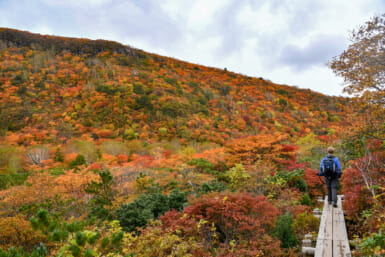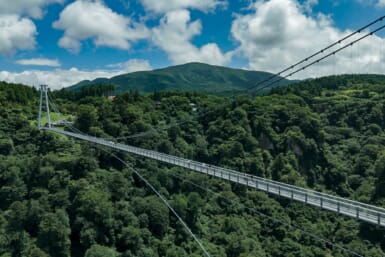by Edward Neilan
ALL over the world, big city neighborhoods are changing. The wrecker’s ball claims more buildings than earthquakes and wars as man seeks to improve his environment. Sometimes he succeeds, but there is genuine nostalgia for the old and traditional.
In this largest modern metropolis, the aristocratic character of Kojimachi—the stately area of magnificent single-family residences in Chiyoda-ku—is changing rapidly. Kojimachi is going the way of Kasumigaseki and Suidobashi with high-rise office buildings squeezing out residences.
During the last six years, taking an informal inventory during morning walks through the Kojimachi area, I have counted no fewer than 60 new buildings. Most are office structures and only a few are apartments. In almost every case, the new buildings have replaced old homes, some of them traditional wooden residences dating before World War II.
High land prices have created high property taxes and many families opt to sell to developers or build high-rises themselves for investment.
One notable new apartment is the Queen’s Palace Sanbancho in which units are advertised for an average ¥1.6 billion. So far they all remain vacant, a quiet if severe testimony to the bursting of the bubble economy.
Former Prime Minister Toshiki Kaifu lives in Kojimachi, in an apartment. Dwindling elementary school enrollments foretell closing of some schools as younger families move to the suburbs.
When I tell people I live in Kojimachi, they are always impressed, conditioned no doubt by past stories of the glory days of the area that lies just outside the Hanzomon Gate of the Imperial Palace.
When I really want to “put on the dog,” I bring guests into my apartment building through the garage so they can see the Daimler limousine, four Mercedes, two Jaguars, a BMW and an Audi parked. Of course, the cars all belong to Japanese residents in the building. The only two foreigners in the building— your foreign correspondent and a staffer of the British Embassy—do not own automobiles in Tokyo.
Before coming here in 1986, I drove a 1979 black Cadillac Seville (one of the last great American cars) in Washington, D.C., my wife drove a 1984 Ford LTD station wagon, daughter Carolyn had a 1982 Nissan 200ZX Fairlady, and daughter Andrea drove a budget Plymouth Horizon.
The cost for all four was less than it would cost to own, drive, park and pay taxes on a single luxury Cima in Tokyo today. But I digress. (My Tokyo answer: rent a Jaguar for a day once a month for psychological stress therapy and beat the system! The rest of the time enjoy the bus and subway.)
Old Kojimachi did not lack passion. There were assassinations and assignations, mostly of the sophisticated and well-planned variety. One did not leave things to chance in old Kojimachi.
Today, the moatside Fairmont Hotel is perfect for an affair; the Kayu Kaikan oozes delegates to the Strategic Impediments Initiatives talks, and the Diamond Hotel is strictly business, including Southeast Asian entrepreneurs, with a sprinkling of out-of-town women’s volleyball teams.
Old Kojimachi means “old money.” The nouveau riche are better off in Saitama. The Kanto Club symbolizes the exclusivity as the hired cars line up to disgorge nobility and political rascals. The British, Belgian, Irish, Israeli, Luxembourg and Vatican Embassies are in Kojimachi as is the office of the European Community. The Indian Embassy lies just across the boundary line in Kudanshita.
There are many blue-chip advertising and public relations agencies, Tokyo FM and NTV, Channel 4. Cray Computer, one of the world’s most famed high-tech firms, operates its Japan headquarters in Kojimachi, as do several think-tanks.
Ironically, this old neighborhood provides the location for the namesake-station of the city’s newest and most upscale subway line—Hanzomon. But there is not a supermarket worthy of the name in all of Kojimachi.
There are now more than 20 art galleries in Kojimachi, one lady’s boutique run by a certain politician’s girl friend, with prices that will knock off your chapeau, and a shop that makes custom whisky and wine glasses to your order.
There are many well-known educational institutions in Kojimachi, among them Sophia University, Otsuma (“Big Wife”) Women’s College, Futaba Catholic Girls School (attended by Empress Michiko), Kojimachi Elementary School and the French School.
There are quite a few sophisticated restaurants on one hand, and many carry-out places, aimed at salarymen and office ladies staffing the new office buildings, on the other.
One of the most interestingly named French restaurants in Tokyo is also one of the best for menu and charm, the favorite of a certain foreign correspondent, Au Bateau Ivre (“The Drunken Boat”). The owner has created a replica of a provincial cafe he once visited in France and it is a culinary blessing on Big Wife Slope Street.
Even if you have sworn off Tokyo French restaurants, better try this one for ambiance that hits you like a velvet sledgehammer. Another surprise, particularly for journalists with uneven hours, is the Ajanta. Surely it is the only Indian restaurant this side of Calcutta which remains open 24 hours a day.
Oldtimers say Akimoto is still one of the city’s best for unagi (eel). A former chief chamberlain to Emperor Showa used to leave the palace for frequent lunches at this place. An expressway has sliced through a corner of Chiyodafuji Park but, thankfully, it has dipped underground, leaving much of the scenery unspoiled.
The chant of the sweet potato dealer is still heard in Kojimachi, but barely above the cacophony of construction pile-drivers and jackhammers. He wheels his cart, anachronistically, amidst Porsche and President automobiles along historic streets stripped of their sidewalk trees to allow more space for parked cars.
Goodbye, old Kojimachi. We miss you!








